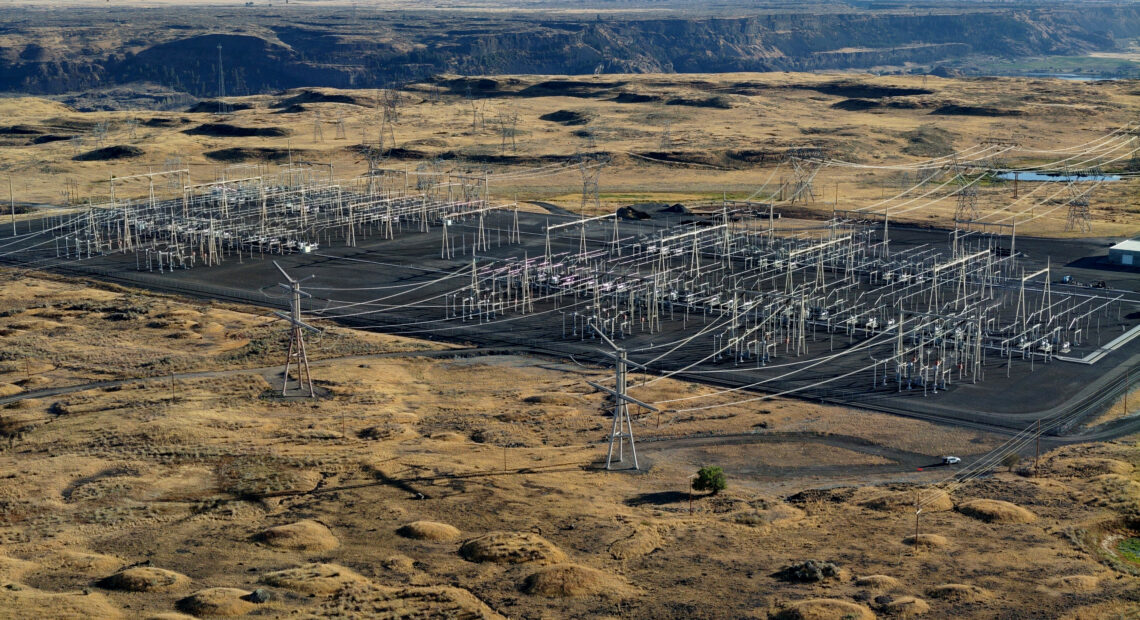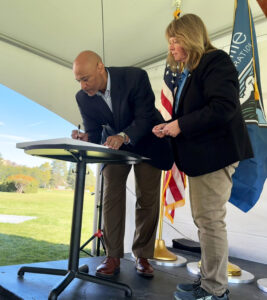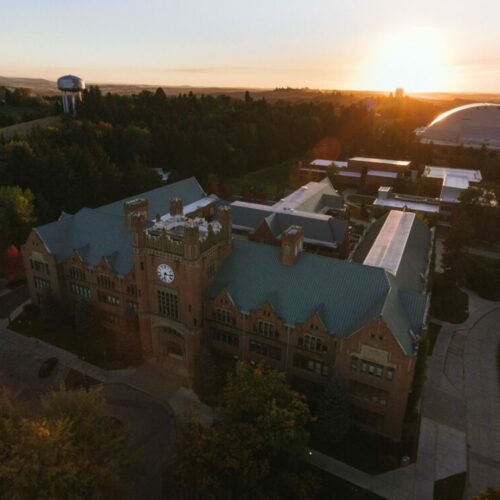
This transfer will help Grand Coulee Dam run more efficiently, save money
Listen
(Runtime 0:56)
Read
There’s a transfer happening at Grand Coulee Dam. After years of planning, the Bonneville Power Administration will start running some equipment at the dam.
Once water flows through hydropower turbines at Grand Coulee Dam, that power has to go somewhere. The first stop is what’s called an electrical switchyard. Like a railroad, the electrical switchyard helps transfer power from the grid to the transmission system.
“We only see that job becoming increasingly important moving forward,” said Kevin Wingert, a BPA spokesperson. “As you’re talking about greater integration of renewable resources you have to have some sort of backstop to balance those resources because they’re variable by nature.”
Now, the three electrical switchyards at Grand Coulee Dam will be operated and maintained by the BPA. Previously, the switchyards were run by the Bureau of Reclamation — but their focus is making sure the dam works.

An American flag hangs in front of Grand Coulee Dam. (Credit: Courtney Flatt / NWPB)
“Our core mission is to move water, whether that’s down the river or up over to Banks Lake for our irrigators, we’re able to now take the switchyards off our plate and really concentrate on what our base mission really is,” said Coleman Smith, a power manager at Grand Coulee Dam with the Bureau of Reclamation.
You’ve likely had that one extra thing added onto your job that you weren’t really meant to do. For years, that’s how it’s been at Grand Coulee Dam. Now, Smith said, the bureau can stretch its funding to modernize generators and transformers, which brings power to the electrical switchyards.
“As we go down the road, budgets are gonna get tighter, and so we need to consolidate our mission, our work,” Smith said.
BPA also plans to modernize the electric switchyard, said John Hairston, BPA’s CEO and administrator. This transfer will save roughly 40% on those projects, he said.

John Hairston, the Bonneville Power Administration’s CEO and administrator, and Jennifer Carrington, the Bureau of Reclamation’s Columbia–Pacific Northwest regional director, sign a memorandum of understanding to officially transfer the electrical switchyards. (Credit: Courtney Flatt / NWPB)
The equipment in the electrical switchyards are a little old, Wingert said. Replacing that equipment will be a roughly 10-year project.
In addition, every year, this will save up to $4 million, Hairston said. That means the new deal will end up saving ratepayers money.
“Anytime we see lower costs, that’s passed on. That’s less money we have to spend and flows into rates,” he said.
Grand Coulee Dam is the largest hydropower producer in the U.S., according to the Bureau of Reclamation. Each year, it generates enough power to electrify about 2 million households.
Standing near the base of the dam, Hairston said he recognized the impact dams have had on Northwest tribes. BPA will manage these switchyards with its commitments to the environment, fish and wildlife as a guide, he said.
“As stewards of this valuable resource, we are constantly challenged to work within limited budgets and to seek creative solutions to preserve reliability and extend its lifespan,” Hairston said.
Ninety years ago, President Franklin D. Roosevelt stood here, predicting Grand Coulee Dam would provide cheap power for years to come, Hairston said.
“Every step we take together preserves the legacy of a great resource. And moves the Northwest closer to the goals of a modern clean energy economy,” he said.
















